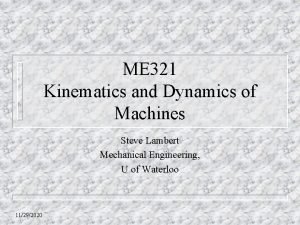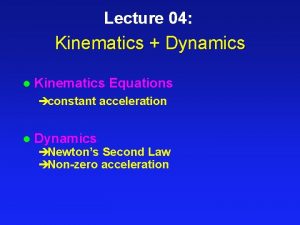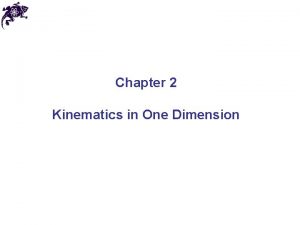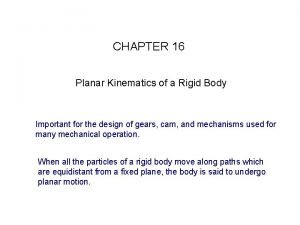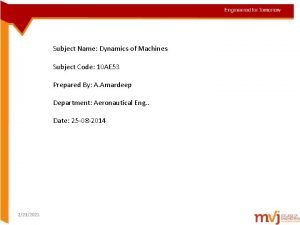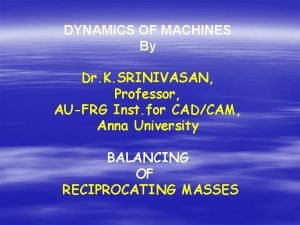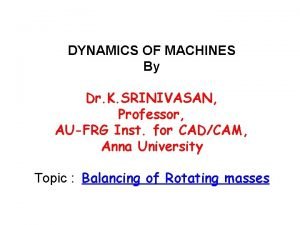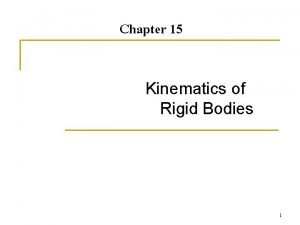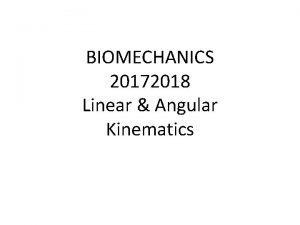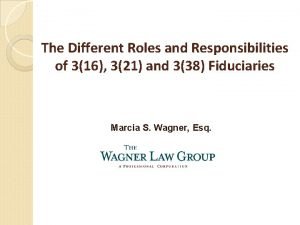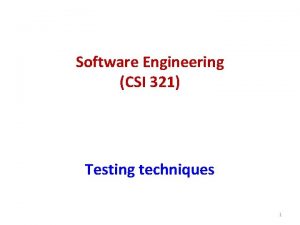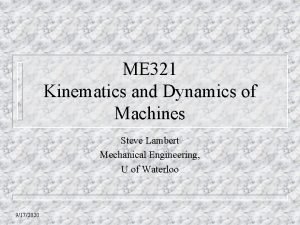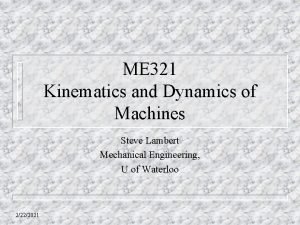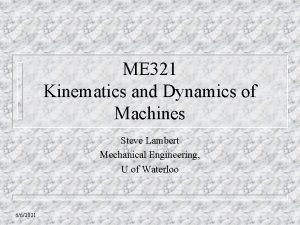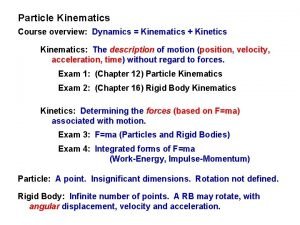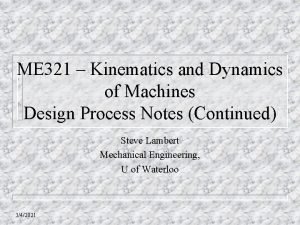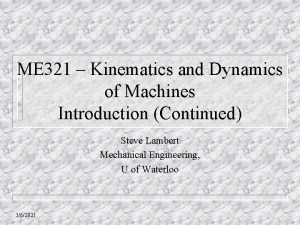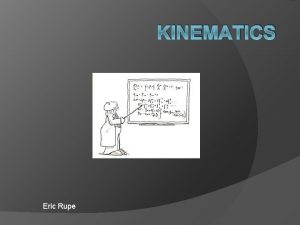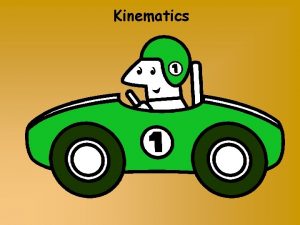ME 321 Kinematics and Dynamics of Machines Steve














- Slides: 14

ME 321 Kinematics and Dynamics of Machines Steve Lambert Mechanical Engineering, U of Waterloo 10/28/2020

Forced (Harmonic) Vibration F(t) x m or, in normalized form: with: 10/28/2020 c k

Summary of Undamped Response The solution is always the summation of the transient and steady-state responses. When there is no damping, there is no phase shift, and the response is singular at the natural frequency. 10/28/2020

Steady-State Solution We assume a solution of the form: This has the same frequency, , as the excitation, and has a phase lag, , compared to the excitation. This can be rewritten as: with: This makes manipulations easier. 10/28/2020

Steady-State Solution Take the derivatives of the assumed solution with respect to time: And substitute into the governing differential equation: We can solve for As and Bs in terms of the system parameters: 10/28/2020

Steady-State Solution Changing back to the amplitude and phase-angle form, the steady-state solution becomes: with: 10/28/2020

Total Solution The total solution is the summation of this steady-state solution and the previous transient solution: The integration coefficients, A and , are again determined from the initial conditions, x 0 and v 0, but this time they also depend on the forcing function. 10/28/2020

Example 6. 4: Determine the steady-state response (amplitude and phase angle) for a mass-spring damper system that has the following properties: F 0 = 1000 N, m = 100 kg, =0. 1, n = 10 s-1, and = 5 s-1. What is the total response for an initial displacement of 0. 05 m and no initial velocity? 10/28/2020

Steady-State Response 10/28/2020

Total Response 10/28/2020

Normalized Response (Steady) It is common to normalize the steady-state response as follows: This can be expressed in terms of the frequency ratio: r = / n 10/28/2020

Steady-State Amplitude 10/28/2020

Steady-State Phase Angle 10/28/2020

Peak Response Notice that the maximum amplitude does not occur at r = 1. For < 0. 707, it occurs at: This maximum amplitude is: 10/28/2020
 Kinematics and dynamics of machines
Kinematics and dynamics of machines Aplusphysics kinematics-horizontal kinematics
Aplusphysics kinematics-horizontal kinematics Dynamics vs kinematics
Dynamics vs kinematics A tourist being chased by an angry bear
A tourist being chased by an angry bear Rigid body
Rigid body Steve jobs steve wozniak and ronald wayne
Steve jobs steve wozniak and ronald wayne Dynamics of machines
Dynamics of machines Dynamics of machines
Dynamics of machines Pivoted cradle balancing machine
Pivoted cradle balancing machine Kinematics of rigid bodies problems and solutions
Kinematics of rigid bodies problems and solutions Kinematics
Kinematics Closed chain kinematics
Closed chain kinematics Edel 321
Edel 321 Responsibilities
Responsibilities Csi 321
Csi 321
